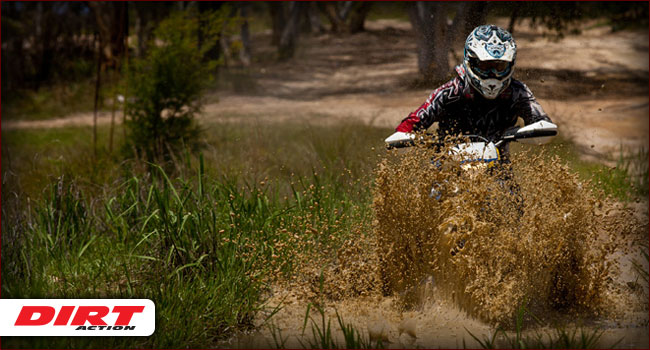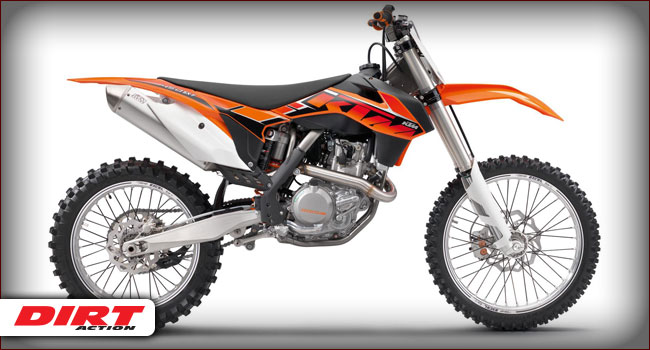
MUD RUNNIN’
What to do when you get that sinking feeling and you can’t see the bottom.
Filthy, stinking mud holes can appear from nowhere to swallow your bike. Legend has it they often hide a gateway straight to Hell at the bottom of their murky bellies and riders should enter with an understanding that they may never come back out. If you’re weak at heart, turn the page — we’re going somewhere filthy.
First up, we’re going to assume that if you’ve ridden into something this deep it has either caught you out or Bigfoot is chasing you and threatening your life. In other words, if you know the mud hole is this deep, avoid it at all costs. It’s a very quick way to find yourself spending some quality time on the side of the trail emptying the dirty, muddy water out of your engine and trying fire your bike up again to make it home.
If you have no choice, keep these few things in mind — they will give you the best chance of avoiding Hell’s gateway.
SPEED
This is critical: too fast and you’ll require too much throttle to push the bike through the water. If water gets anywhere near the air filter and you have the throttle pinned, there’s more chance of it being sucked straight through into the engine. On the other hand, if you go too slowly you risk a variety of problems like stalling the bike, sinking into the muddy bottom or losing your balance. The correct speed should have you maintaining good forward momentum without creating a barrel of muddy water over your head. If you nail the right speed, you’ll actually create a wake that will push the water away from the sides of the bike and the airbox.
SIT OR STAND
The majority of time it’s best to remain standing. The downside to standing is you don’t have your feet at the ready if you lose balance. When the water is only axle deep, that’s not a big deal, but when it’s seat deep you don’t want to fall over! In this case you should resign yourself to the fact that your legs and boots are going to get wet, so staying in the seated position is a safer option. Keep your feet on the pegs if you can, but if you need to stab a foot down to save a crash they are at the ready.
CONTROLS
A good skill level with your throttle and clutch will help here; controlling your speed will require the use of both. You’ll most likely need to slip the clutch slightly so you can maintain the speed you want but also keep the rpms up to avoid stalling the bike. If you stall, it can be a problem. When the bike stops it loses the wake created by forward movement, which keeps the water from entering your airbox as quickly. The water will settle around your stationary bike and start flowing into every opening it can — including your airbox.
YOU SANK IT
Once you’ve battled your bike out the other side and got your breath back, it’s time get to work. This is for a carby bike that’s been completely submerged and is full to the brim with sky juice. It may work with EFI but wet electronics don’t always play the game. You’ll need some tools, so hopefully you have some; if not, get on your phone if it’s not waterlogged and call in some help because you’re going nowhere.
First up, remove the air filter, wring it out and sit it somewhere to start drying. Remove your spark plug and flip your bike upside down so it’s resting on seat and handlebars. Now put the bike in first gear and spin the back wheel: this will crank the engine over and start emptying the water out. Once it’s all out, flip the bike back upright and throw the spark plug back in.
Next, you need to drain the carby by removing the drain bolt on the bottom of the float bowl; turn your fuel on while the drain bolt is out to help flush it through a little. To finish up, reinstall the drain bolt, throw your air filter back in and start praying to whomever you pray to. All going well, after a few kicks she’ll fire up.
NO JOY?
* Disconnect the kill switch and electric start button. They can short out and stop the bike from starting.
* Drain the carby once more for good measure.
* Still no luck? Get some help or start walking.



